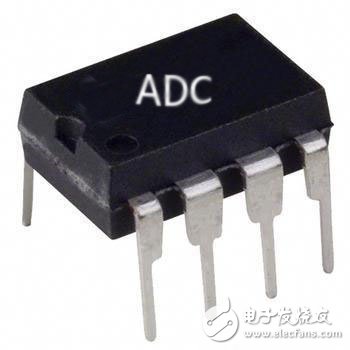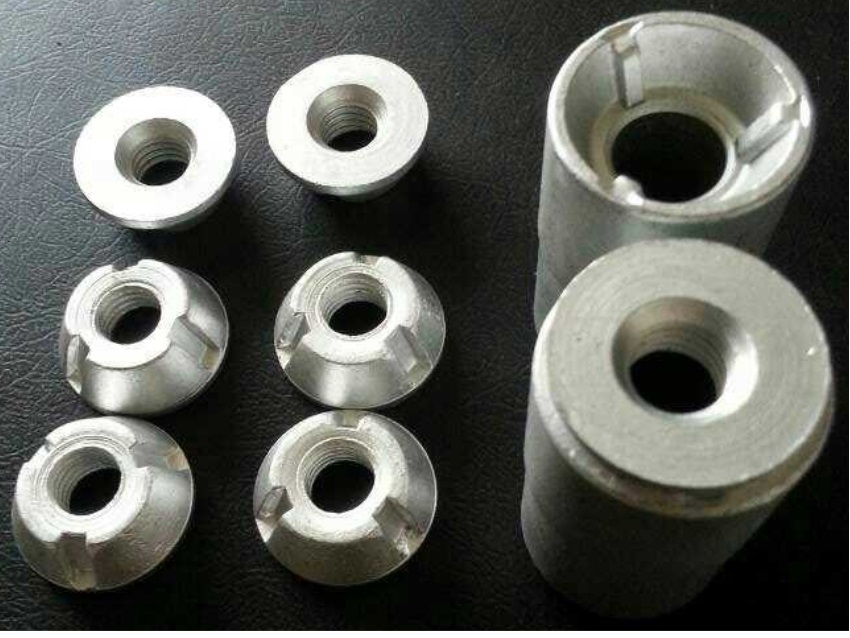The analog-to-digital converter usually converts an input voltage signal into an output digital signal. The ADC is an important component in the circuit. This paper introduces the basic principle, conversion steps, main technical specifications and characteristics of different types of ADCs. .
1 The basic principle of analog to digital converter
The process of converting analog quantities into digital quantities is called "analog-to-digital conversion." The circuit that completes the analog-to-digital conversion is called an analog-to-digital converter (ADC) (Analog to Digital Converter).
2 steps to achieve analog to digital conversion
Analog-to-digital conversion generally involves several steps of sampling, holding, and quantifying and encoding.
Sampling theorem: When the sampling frequency is greater than twice the highest frequency component of the analog signal, the sampled value can reflect the original analog signal without distortion.

3 main technical indicators of analog to digital converter
Conversion Accuracy The integrated ADC describes the conversion accuracy with resolution and conversion error.
(1) Resolution
The resolution is usually expressed in terms of the number of bits output binary or decimal digits, because the larger the number of bits, the smaller the quantization unit and the higher the resolution of the input signal.
For example, the input analog voltage varies from 0 to 5 V, and the output 8-bit binary number can be
The minimum resolved analog voltage is 5 V & TImes; 2-8 = 20 mV; and the output 12-bit binary number can
The minimum analog voltage resolved is 5 V & TImes; 2-12 ≈ 1.22 mV.
(2) Conversion error
It refers to the deviation between the measured range and the theoretical range of the analog input voltage corresponding to each digital quantity after the zero point and the full scale are calibrated, and the maximum deviation is taken as the index of the conversion error. It usually appears as a relative error and is expressed in LSB units. For example, the relative error of the ADC0801 is ±1â„4 LSB.
Conversion speed
The time required to complete an analog-to-digital conversion is called the conversion time. In most cases, the conversion speed is the reciprocal of the conversion time.
The conversion speed of the ADC depends mainly on the type of conversion circuit. The parallel comparison ADC has the highest conversion speed (conversion time can be less than 50 ns), and the successive approximation ADC is second (the conversion time is between 10 and 100 μs). Double integral ADC The conversion speed is the lowest (the conversion time is between tens of milliseconds and hundreds of milliseconds).
4 The composition of the analog-to-digital converter and the characteristics of different types of analog-to-digital converters
There are many types of analog-to-digital converters, which can be divided into indirect ADCs and direct ADCs depending on the operating principle.
Indirect ADCs convert the input analog voltage to time or frequency and then convert these intermediate quantities into digital quantities. A commonly used double-integral ADC with a median of time is used.
Direct ADCs are directly converted to digital quantities. Commonly used are parallel comparator ADCs and successive approximation ADCs.
Parallel comparison ADC: Since the parallel comparison ADC adopts simultaneous parallel comparison of various magnitudes, each output code is also generated in parallel at the same time, so the fast conversion speed is its outstanding advantage, and the conversion speed is independent of the output code bit. The disadvantage of parallel comparator ADCs is their high cost and high power consumption. Because of the n-bit output ADC, 2n resistors, (2n -1) comparators and D flip-flops, and complex coding networks are required, and the number of components increases with geometric progression as the number of bits increases. Therefore, this ADC is suitable for applications requiring high speed and low resolution. Successive approximation ADC: The successive approximation ADC is another direct ADC that also produces a series of comparison voltages VR, but unlike parallel comparator ADCs, which generate comparison voltages one by one, are successively compared with the input voltage to gradually approximate The way to perform analog to digital conversion. The successive approximation ADC needs to be compared bit by bit for each conversion. It requires (n+1) beat pulses to complete, so it is slower than the parallel comparator ADC, and much faster than the double-division ADC. Fast ADC device. When there are many other bits, it requires much fewer components than the parallel comparator, so it is a widely used one in the integrated ADC.
Dual-integrated ADC: An indirect ADC that integrates the input sample voltage and the reference voltage twice to obtain a time interval proportional to the average value of the sampled voltage, while using a counter to the standard clock pulse during this time interval. (CP) count, the counter output is the corresponding digital quantity. The advantage of the double integral ADC is that it has strong anti-interference ability; good stability; high-precision analog-to-digital conversion can be realized. The main disadvantage is the low conversion speed, so most of these converters are used in instruments that require high precision and low conversion speed requirements, such as in multi-bit high precision digital DC voltmeters.
Fasteners, fastened and used for a very wide range of applications and a type of mechanical parts. Fasteners, the use of a wide range of industries, including energy, electronics, electrical, mechanical, chemical, metallurgy, mold, hydraulic and so on, in a variety of machinery, equipment, vehicles, ships, railways, bridges, construction, structure, tools, equipment , Chemicals, instruments and supplies above, you can see all kinds of fasteners, is the most widely used mechanical basis. It is characterized by a wide variety of specifications, performance, use different, but also standardization, serialization, the degree of generalization is also very high.
Type: Lock nuts and Tools
Size: M10 and M12
Material: Carbon steel
Finishing: Zinc coated
Application: Kinds of lines which need bolts and nuts, this nuts can not be screwed by normal tools, it can avoid losses for you.

Fasteners Series,Lock Nuts And Tools,Fastener Lock Nuts,Steel Lock Nuts
HEBEI ZIFENG NEW ENERGY TECHNOLOGY CO.,LTD. , https://www.zifengpipeline.com